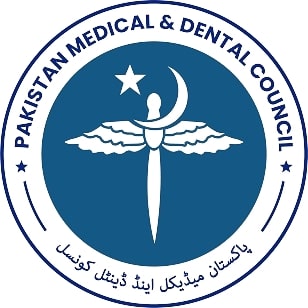OUTCOME OF CROSSED K-WIRES WITH LATERAL K-WIRES FOR TYPE-III SUPRACONDYLAR FRACTURE OF HUMERUS IN CHILDREN
DOI:
https://doi.org/10.59058/jaimc.v20i1.5Keywords:
Crossed K-wires, lateral K-wires, percutaneous fixation, Supracondylar fracturesAbstract
Background and Objectives: Elbow is the most common site of fractures in children. It accounts for approximately 60% of all injuries in children. These fractures are caused by direct or indirect low energy trauma. Immediate & late complications are common in fracture of this region. The objective of this study was to compare the outcome of two different modes of treatment i.e. crossed K-wires versus lateral wires for displaced type-III supracondylar fracture of Humerus in children.
Methods: A total of 80 patients having age between 2-13 years with type-III supracondylar fracture of Humerus type III those fulfilling the inclusion criteria were admitted through emergency department of this hospital. All these patients underwent x-rays of the elbow joint both AP & Lat views before the surgery. Patients were randomly divided into 2 equal groups. In group A, all fractures were fixed with crossed K-wires after reduction of these fractures, one wire from the medial condyle and one from the lateral condyle while in group B all fractures were fixed from the lateral condyle with 2 parallel K-wires of 2mm size in a divergent way after reduction of these fractures. In both of these groups, all these fractures were reduced closely under G/A with the help of image intensifier.
Results: In group A 62.5% patients presented with type-III A while 37.5% presented with type-III B fractures. In group B 70.0% patients had type-III A fractures while 30.0% patients type-III B fractures. Functional & radiological assessment was done with Baumann's angles & modified Flynn's criteria. At the final follow up the Baumann's angle was equal in both of these groups (78.15 + 3.32 in Group A) & (79.1 + 4.21 in Group B p>0.45).
Conclusion: This study concluded that there is no statistical significant difference in both modes of treatment regarding the stability of fixation and in terms of functional outcomes. However there are more chances of ulnar nerve injury with crossed k-wires fixation.
Downloads
Published
How to Cite
Issue
Section
License
The articles published in this journal come under creative commons licence Attribution 4.0 International (CC BY 4.0) which allows to copy and redistribute the material in any medium or format Adapt — remix, transform, and build upon the material for any purpose, even commercially under following terms.
-
Attribution — You must give appropriate credit, provide a link to the license, and indicate if changes were made. You may do so in any reasonable manner, but not in any way that suggests the licensor endorses you or your use.
- No additional restrictions — You may not apply legal terms or technological measures that legally restrict others from doing anything the license permits.
The editorial board of the Journal strives hard for the authenticity and accuracy of the material published in the Journal. However, findings and statements are views of the authors and do not necessarily represent views of the Editorial Board. Many software like (Google Maps, Google Earth, Biorender (free version)) restricts the free distribution of materials prepared using these softwares. Therefore, authors are strongly advised to check the license/copyright information of the software used to prepare maps/images. In case of publication of copyright material, the correction will be published in one of the subsequent issues of the Journal, and the authors will bear the printing cost.










